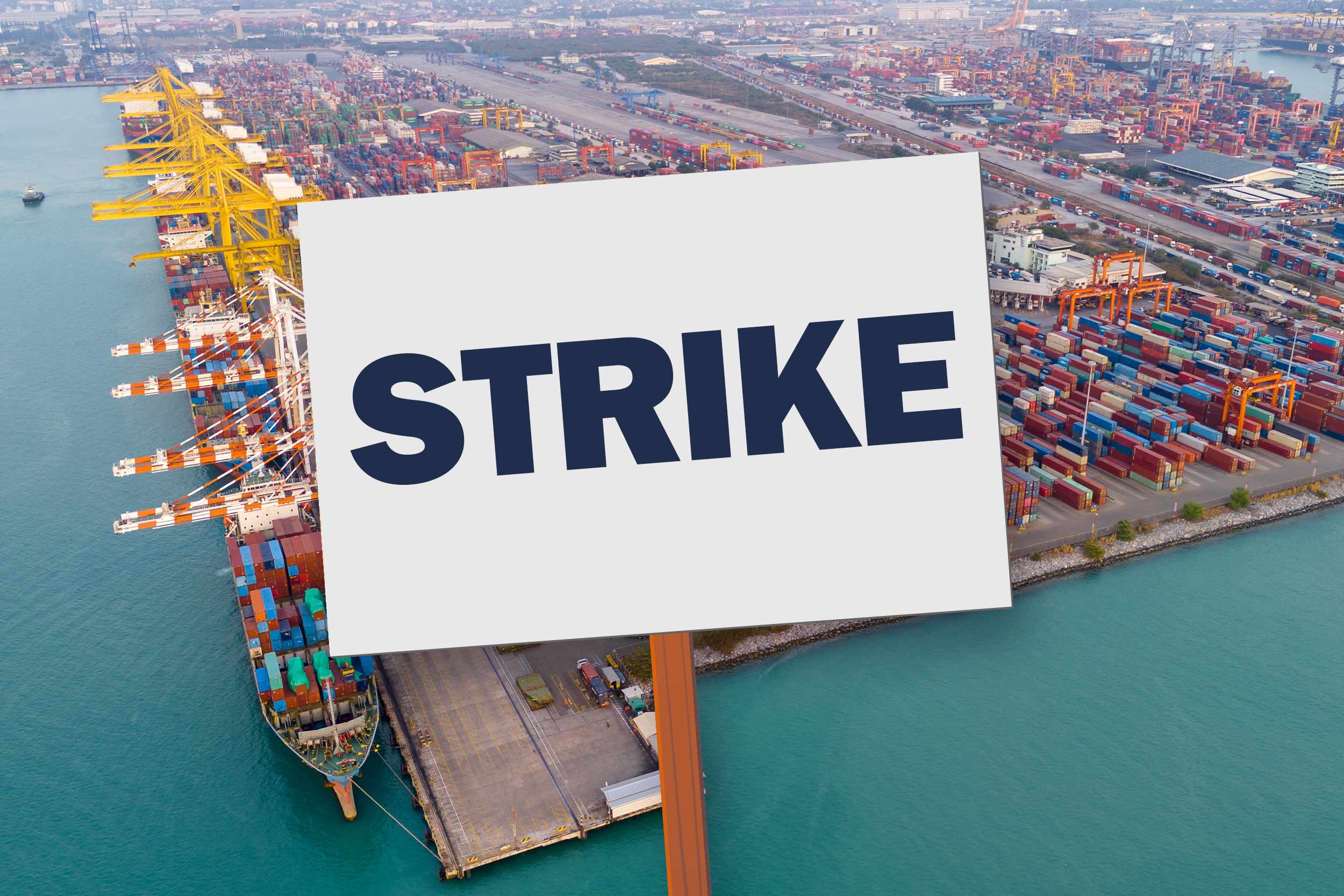A banana shortage? Toys not arriving in time for the holidays? Increased prices on goods?
These are all possibilities in the near future.
U.S. dock workers along the East and Gulf coasts, roughly 45,000 in all, began striking early Tuesday morning as the contract expired between the International Longshoremen’s Association and the U.S. Maritime Alliance, which represents the ports.
The first such work stoppage of its kind since 1977 marks a significant development in the transportation of goods and services with holiday shopping on the horizon.
To gauge the range of the strike’s impact, UVA Today turned to Vidya Mani, an associate professor at the University of Virginia’s Darden School of Business, whose areas of expertise include supply chain risk management and sustainable operations.
Q. Why is this strike happening?
A. Rising inflation, more work to keep up with demand, a tightening labor market, and threat to jobs from AI and automation are some of the key factors. We have seen a rising trend among blue-collar workers, including autoworkers at car plants, machinists at Boeing, and the threat of strikes from railroad workers, cargo movers and truckers.
These are people essential to keep the supply chain moving, and threat of a strike right before the holiday rush is a leverage that has been effectively used in the past. Recent negotiations with autoworkers and the UPS workers have set an example that a strike can force the companies and government to the negotiating table for higher wages and other demands.
George Stephanopoulos:
With the tens of thousands of dock workers who walked off the job just after midnight, the strike threatens the nation’s supply chains, could lead to higher prices, possible shortages. Ports from Maine to Texas are impacted. Want to go back to Elizabeth Schulze at the Port of New York in New Jersey. Good morning, Elizabeth.
Elizabeth Schulze:
Hey, good morning, George. And this is the first time in nearly 50 years that tens of thousands of those union dock workers all along the East and Gulf coast have gone on strike. Workers here told us they showed up just at midnight when the International Longshoreman’s Association announced the strike. And the union’s president says they will not leave until they get a fair deal. So despite these 11th-hour negotiations, there was not a deal between the U.S. Maritime Alliance and the union over a six-year contract.
The union wants a 77% wage increase, limits on the use of automated machines. The alliance has responded with a nearly 50% pay hike. So what this means is that 14 ports that handle more than half of cargo that comes into the U.S. are now at a virtual standstill. So that means products like groceries, clothes, machinery will not be loaded on or off container ships.
This strike really could be crippling for the U.S. economy depending on how long it lasts. A weeklong strike expected to cost $7.5 billion. Many companies have been stockpiling and rerouting their shipments to West Coast ports to make sure that their shelves are stocked ahead of the holiday shopping season, but every day that the strike goes on, it could take six days to clear the backlog.
The White House says that it is closely working with both parties to try to negotiate a deal fairly and quickly. Michael …
Michael Strahan:
Yeah, Elizabeth. A lot of disruption there. Thank you so much for that.
Q. What is its historic significance?
A. It’s happening after almost 50 years since the last strike. That’s historic. Given how critical ports are to keep the economy moving, we rarely see a strike happen. Usually, they come to the negotiating table and keep operations going. The timing of the strike, right before the holiday rush, the optics in terms of the presidential election, and the confounding geopolitical issues like stoppages of goods flowing through the Red Sea, the lower levels in the Panama Canal, make this one historic in nature.
It can turn into a perfect storm very quickly. We are relying on the West Coast ports to take up most of the flow, but that will add delays and backlogs to ports that are already operating at almost capacity in times of regular operations. And if the West Coast dockworkers join in, it will be almost like pandemic times.
While the government hasn’t stepped in yet to force both sides to the table, if this strike spreads, they absolutely will have to do so.
Q. Which industries does this affect most? What goods are impacted most?
A. Almost half of our basic goods come through these ports, including produce and goods like apparel and toys. More importantly, parts that feed into the factories all along the East Coast belt and shipments of finished products out from the country will be severely impacted. Things that are not perishable will pile up at the ports and roll off when the strike ends. There is only so much time a perishable item like fruits and vegetables can be kept fresh.
Q. How soon will the average consumer feel the impact of this strike?
A. In terms of food supplies, most stores will operate on very lean inventories. But there is a significant portion of local production that can help tide over shortages. You will not find the kiwi fruit that comes from New Zealand, but you will find peaches that are grown in Virginia.

